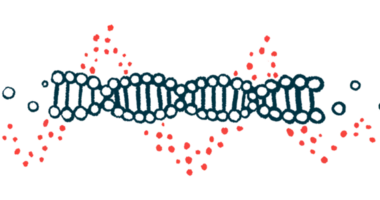Extended hemophilia half-life products aid care, but raise costs
Fewer infusions and bleeds, better treatment adherence among improvements

Adults with hemophilia who switched from standard to extended half-life replacement treatment needed fewer infusions, had fewer bleeds per year, and adhered better to their treatment schedules, a Finnish study shows.
Switching to extended half-life replacement treatment increased the mean yearly costs by nearly €19,000 (about $22,000) for hemophilia A patients. The increase in yearly costs was even higher with hemophilia B, by more than €60,000 (about $70,000).
Despite the “somewhat increased costs,” these findings “set a foundation for future standards in hemophilia care, not only in Finland, but also in other healthcare systems, by highlighting the benefits of [extended half-life] treatment in improving disease management,” the study’s researchers wrote. The study, “Switching From Standard to Extended Half-Life Coagulation Factor Replacement in Haemophilia: Clinical Outcomes and Costs of Care in Finland,” was published in Haemophilia.
Hemophilia is typically caused by mutations in genes that provide instructions for producing a clotting factor, a protein needed to stop bleeding. These mutations lead to a faulty version of the clotting factor being produced, or too little of it or none at all.
Without enough working clotting factor, the blood can’t clot properly, which can cause frequent episodes of excessive and prolonged bleeding. The faulty or missing clotting factor in hemophilia A is factor VIII (FVIII); in hemophilia B, it’s factor IX (FIX).
Switching to extended half-life treatment
Factor replacement treatment helps prevent or reduce bleeding by providing the body with the clotting factor that’s missing or not working properly. These therapies can have a standard half-life, which requires more frequent dosing, or an extended half-life that lasts longer and requires less frequent dosing.
To better understand the advantages of extended half-life treatment, the researchers reviewed data on 215 adults with hemophilia A and 58 with hemophilia B who received preventive treatment at five university hospitals in Finland from 2016 to 2021. They looked at how often they bled, how well they adhered to their treatment schedules, and the cost of their care. They focused on 93 patients with hemophilia A and 24 with hemophilia B who were on preventive treatment, or prophylaxis. Most — 74% with hemophilia A and 71% with hemophilia B — had switched from standard to extended half-life treatment.
After switching, the mean number of weekly infusions decreased from 2.8 to 2.2 in those with hemophilia A and from 1.6 to 0.9 in those with hemophilia B. However, the mean prescribed dose of FVIII used for hemophilia A increased by 17% after the switch. For hemophilia B, the mean prescribed FIX dose didn’t increase.
The annual bleeding rate, a measure of how often patients had bleeds in a year, also decreased after the switch. In hemophilia A, the mean annual bleeding rate fell from 2.8 to 0.9 and in hemophilia B it dropped from 1.6 to 0.8.
Treatment adherence, or how well patients followed their care plans, also improved. In hemophilia A, prescription adherence increased from a mean of 81% to 95%, and the medication possession ratio, which measures the proportion of days covered by treatment, increased from a mean of 87% to 95%. For hemophilia B, the adherence stayed about the same.
After switching to extended half-life replacement treatment, the patients had more visits to hemophilia specialists. Hemophilia A patients’ outpatient visits increased from a mean of 3.8 to 5.7 a year, while hemophilia B patient visits doubled from a mean of 3.1 to 6.3.
The costs also increased. For hemophilia A, mean yearly costs increased from €176,979 to €195,760 per patient. In hemophilia B, they increased from €180,930 to €236,208 annually. The increases were likely due to the higher price of extended half-life replacement treatment products.
The researchers said the switch to extended half-life replacement treatment by most patients in Finland on prophylaxis “succeeded well,” owing in part to “improved treatment adherence.” The move also helped reduce how often patients needed treatment, lowered their bleeding rates. They said the higher costs may also be the result of patients becoming more physically active and requiring higher doses.







